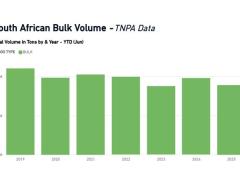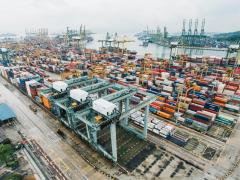Plans for the controversial Cato Ridge intermodal hub (50 kilometres inland of Durban adjacent to the N3 highway) are once again a talking point in the KZN freight industry. The “controversial” nature of the Cato Ridge development stems from the fact that the original idea expressed over a decade ago came from sources in the then ports authority management. And they described the concept as a “dry port”. A full-scale inland port, where import and export containers would go through the appropriate customs procedures – effectively substituting for this customs clearance function being carried out in the Port of Durban. Adding to the controversy was an accompanying scheme, where the idea was to effectively ban all road transport from the harbour area, and haul containers by rail to and from Cato Ridge. The logistics and transport industries immediately told FTW that they rejected this scheme as unfeasible. They pointed out that the entire freight industry would have to relocate to Cato Ridge; that it would force locally bound containers (some 57% of the container traffic currently flowing through the port of Durban) to do a double trip over the 50km route between Cato Ridge and Durban; and that rail was unable to offer a cost-efficient service over such a shorthaul route. Fortunately, the controversial concept quickly faded from the lips of Transnet management. And this was recently confirmed by Marc Descoins, Transnet National Ports Authority (TNPA) project manager for the dig-out port, and familiar with the entire freight infrastructure planning surrounding the new harbour. He told FTW: “Transnet has no such plans.” However, rumours still abound about this “harebrained” scheme still being on the cards. The main part of this came from a story that FTW heard from certain sources. That a private sector grouping intended to develop something which sounded like a dryport very soon; that land in Cato Ridge - including the current country club/golf course – had been purchased; that a “walk-through” for potential investors was planned for that very week; and that all trucks would be banned from Durban harbour. But, although FTW spent a week trying to find out who comprised this private consortium, nothing but further vague rumours were heard. The unfortunate thing is that the words “dry port” still keep cropping up. The then transport minister, S’bu Ndebele, said two years ago that this dry port concept still existed in government’s medium term plans. But Paul Sessions, the transport economist for the Ethekwini Municipality, and the designer of the overall plan for the future freight infrastructure for the current Port of Durban and the new dig-out port on the site of the old Durban International Airport, has finally scotched the rumours. “We see it as an intermodal hub, NOT a dry port – which is not viable from a business point of view, and no good for the city,” he told FTW. “We agree with the objections to all containers going to Cato Ridge. We’ve looked at that, and rejected it. “Also, we don’t think there’s enough demand for the intermodal hub at the moment, but think that it may develop over the longterm, as demand grows.” And, indeed, apart from the Ethekwini Municipality’s in-depth planning, the only other sensible idea that came up in FTW’s extensive investigation of the Cato Ridge intermodal hub – over 450 pages of technical reports, and repeated phone interviews with more than 10 different authoritative brains – was from the words of Siyabonga Gama, CE of Transnet Freight Rail (TFR). “I am led to believe by the planning team that they want to pilot a small terminal at the site of the current Cato Ridge station,” he said. “TFR would build this terminal and depending on how it pans out, there could be a bigger terminal in which the private sector would have to co-invest with us. This would include distribution and warehousing opportunities.” INSERT & CAPTION I am led to believe by the planning team that they want to pilot a small terminal at the site of the current Cato Ridge station. – Siyabonga Gama












